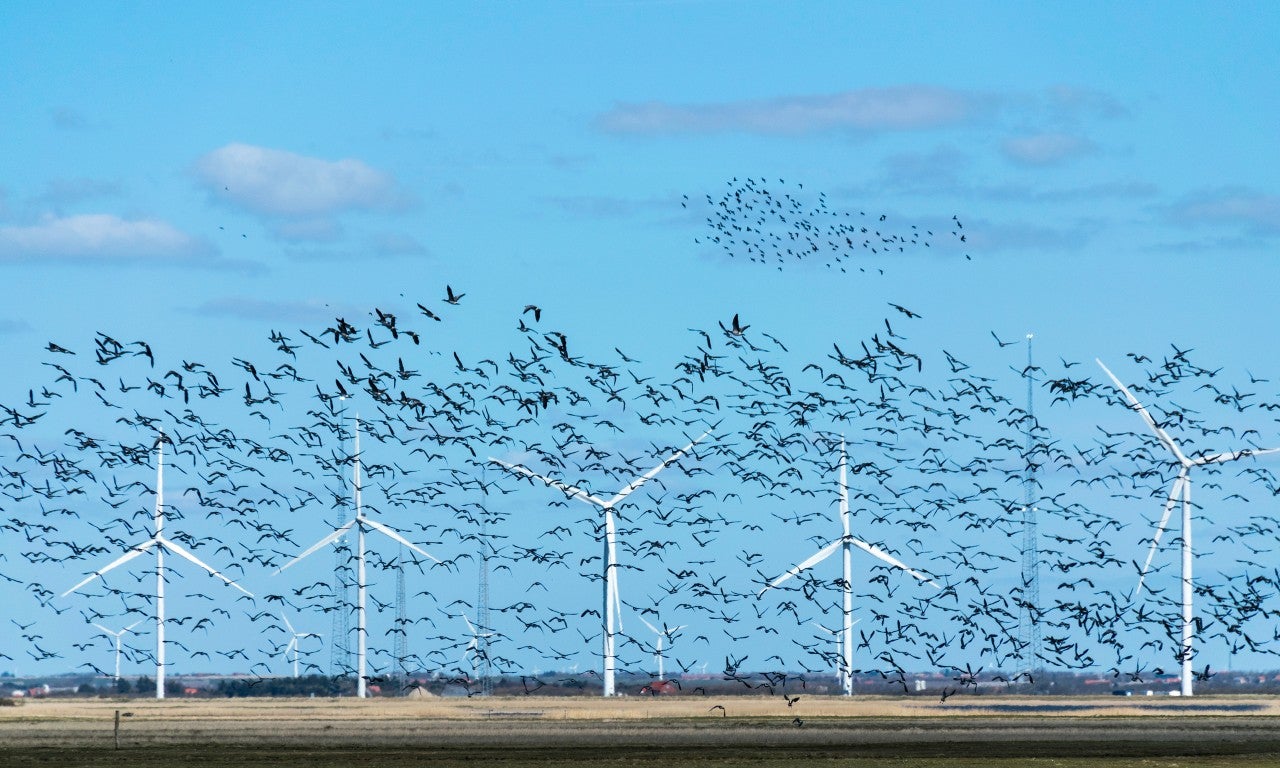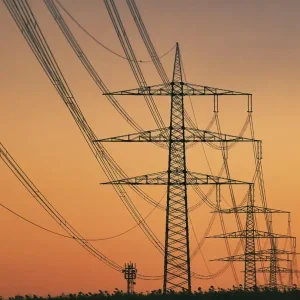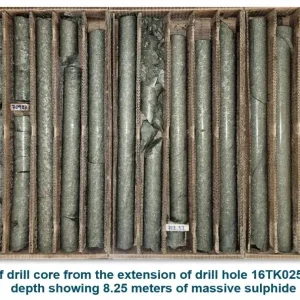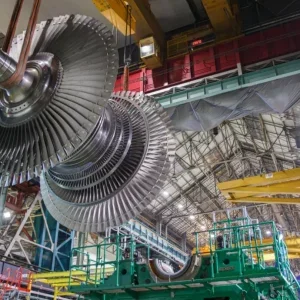
The impact turbines have on bird and bat populations is undeniable, a frequent soundbite used by those who oppose the construction of wind power installations – yet, at the same time, it is far below that of fossil fuels, or indeed, glass windows. Abi Millar talks to Joel Merriman of the American Bird Conservancy (ABC) and Christine Sutter of Natural Power about what is being done to minimise bird and bat fatalities caused by wind turbines.
In October 2020, Donald Trump reiterated his infamous stance against wind energy. “I know more about wind than you do,” he told Joe Biden during the presidential debate. “It’s extremely expensive. Kills all the birds.”
His claims were roundly mocked in the media. A Vox article pointed out that, were the president truly concerned about birds, he would be directing his ire towards cats. These cuddly predators kill around 2.4 billion birds in the US every year, compared with 234,000 for wind turbines. Even the windows in a house are more of a menace, with 599 million annual bird deaths caused by building glass collisions.
These stats, from the US Fish and Wildlife Service, present an obvious counterpoint to Trump’s obfuscation, and may seem like an argument for letting wind developers off the hook. According to the Royal Society for the Protection of Birds (RSPB), “appropriately located wind farms have negligible impacts on bird populations”. What’s more, wind power has been shown to be far more bird-friendly than fossil fuels.
However, while it is disingenuous to use bird fatalities as an argument against clean energy, the industry’s impact on biodiversity is far from a trivial issue. Turbines do kill airborne animals like birds and bats, including many protected species. This in turn has consequences across the food chain and can wreak lasting damage on ecosystems.
A delicate balance between development and conservation
For anyone who truly cares about the environment – a group that presumably includes most wind developers – there is sometimes a tricky balance to be struck between development and conservation.
“We fully support environmentally responsible wind energy developments, but we want to try to help this industry move forward in an environmentally responsible way,” says Joel Merriman, Bird-Smart Wind Energy campaign director at the American Bird Conservancy (ABC). “We need to have guidelines in place at the outset that will make sure we’re minimising the impacts to wildlife. Otherwise, haste makes waste, and it’s going to create new problems.”
Merriman feels the issue should be assessed on a project-by-project basis. If wind turbines are put in the wrong places, the implications for wildlife can be catastrophic. This is frequently the case where there are rare bird populations, or species that are less resilient against losses.
“Certain species are more vulnerable than others to collisions,” he says. “These include raptors – hawks, eagles, falcons and more – and this is a group that have a tendency to spend more time on the wing. They are going to do this at a height above ground level that puts them within the rotor swept zone of the average wind turbine.”
According to a recent study by the US Geological Survey, which looked at 14 raptor species, five of those species are at risk of population declines as a result of wind energy development. Even a small dip in numbers can cause problems: these species have very low rates of reproduction and, as the apex predators of the sky, are critical to the functioning of the ecosystem.
“While they’re on the wing, they’re looking at the ground, they’re looking for prey,” says Merriman. “They’re not accustomed to having 500ft-tall structures in their flight path.”
Migratory birds are also at risk of collision, given that turbines may not be visible against the night sky. Even among birds that can detect the turbines, there may be unwelcome disruptions to their migration route. Other birds may be at risk of losing their foraging and nesting habitats.
“There are studies from Europe that show that for some species, offshore wind facilities effectively displace birds that might have otherwise used that area,” says Merriman.
The overlooked impact on bats
Then there is the impact on bats, often overlooked in these conversations. Bat populations have plummeted in recent years, largely as a result of land use practices, climate change, pollution, human disturbances and a fungal disease called ‘white-nose syndrome’. Wind turbines provide an additional stressor: one 2013 study estimated 600,000 bats were killed by turbines in North America the previous year. Installed capacity has more than doubled since that study was conducted.
“Echolocating bats are vulnerable to collision because of the lack of solid surfaces within the area swept by the rotor,” explains Christine Sutter, global head of wildlife technology at Natural Power. “In most instances, a bat perceives the rotor swept area as open space and enters the space. Unfortunately, the space will not remain empty for long as the rapidly spinning rotors will strike the bat.”
What can be done is a difficult question. Clearly the solution is not to limit wind development efforts – even if bird and bat fatalities are the only metric you care about, the damage to their populations from wind turbines is far eclipsed by the damage from climate change.
Wind companies, then, are exploring a range of strategies that can be used to minimise fatalities. One popular approach is curtailment – for example, shutting down the turbines at times when they’re likely to cause harm.
A new approach developed by IdentiFlight uses a mix of AI, machine learning and high precision optics for this purpose. The system automatically curtails the turbine when an eagle (or eagle-like flying object) is detected. In tests, it cut eagle fatalities by 82%.
Natural Power’s DARC (Detection and Response Curtailment) system does something similar for bats. It is designed to replace blanket curtailment strategies, which use the time of year and wind speed to determine when to curtail. For example, a US site with endangered bats will typically curtail at night during the migration season, when wind speeds are below 6.9m/s.
“This strategy wastes a lot of curtailment hours because the site is curtailing turbines when few or no bats are present,” says Sutter. “An alternative strategy is smart curtailment, in which turbines only curtail when bats are present and at risk of colliding. Under such an approach, the number of curtailment hours is reduced, which means more non-carbon energy is generated.”
In 2020, Natural Power demonstrated that the DARC system recovers about 40% of the energy lost under a blanket curtailment strategy, while protecting bats just as well. It uses acoustic sensors to monitor the presence of bats in real time. By combining this data with weather conditions and other metrics, it determines the overall risk and stops the turbine only when the risk is high.
“Natural Power can adjust many system elements, including a rule set that triggers curtailment,” says Sutter. “For example, a site with protected species might operate under a rule set that is weighted towards preventing bat fatalities and less focused on energy generation. In contrast, a site without such species may want these resources to be balanced equally.”
The company is now conducting a second year of testing with a view to beginning long-term commercial deployment. It has also installed its first commercial system at a wind farm.
Methods of protecting biodiversity
Other approaches centre around placing birds out of harm’s way – for instance, by re-nesting them away from wind farms. In one study, researchers in Spain tilled the soil around the base of turbines, reducing the amount of vegetation that could grow there and consequently the number of small animals. This made the area less attractive to kestrels seeking prey.
A Californian wind energy company, Avangrid Renewables, is looking to offset condor fatalities by financing their breeding. According to the company’s projections, its Manzana plant will likely kill two adult condors and two chicks or eggs over a 30-year-period. Through working with a captive breeding facility, which will raise six condors before releasing them into the wild, the company hopes to mitigate its impacts on this critically endangered population.
A 2020 Norwegian study found that painting one of the rotor blades black makes the turbine easier for birds to see. Fatality rates dipped by over 70% during the study period. Meanwhile, a Spanish company called Vortex has gone one better by developing bladeless turbines, harmless to birds and bats, which quiver in the wind.
However, as Merriman sees it, the ecological impacts should really be addressed during the siting process, as opposed to being mitigated only once the turbines are installed.
“The most important element of minimising the impacts of a wind energy facility is making sure it’s sited in the right location,” he says. “I strongly encourage developers to speak with bird experts before they’ve got a plan in place.”
The ABC’s ‘bird-smart wind energy principles’ include a range of best practices, as well as a wind risk assessment map that flags up no-go areas. The ABC also works on policy, and gets involved in the project review and approval process when a facility is proposed somewhere deemed inappropriate.
“For example, if we have identified an area as a ferruginous hawk key wintering area, you’ll probably want to go out and do some ferruginous hawk wintering surveys,” says Merriman. “So, we put that information out there to assist developers in finding low risk areas for wind energy facilities.”
The clean energy versus biodiversity conflict (often described as ‘green versus green’) isn’t an easy one to solve. However, if wind energy is developed in the right locations and using the appropriate technologies, there arguably doesn’t need to be a conflict at all. As the technology progresses, developers need to think in terms of ‘both/and’ – both preserving ecosystems and advancing clean energy – rather than ‘either/or’.
This article first appeared in World Wind Technology Vol. 2 2021. The full publication can be viewed online here.






